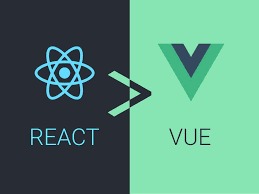
JavaScript frameworks have evolved significantly, providing developers with powerful tools to build modern web applications. Among these frameworks, Vue.js and React stand out due to their simplicity, flexibility, and robustness. But what if you want to leverage the strengths of both frameworks in a single project? This article will guide you through integrating React components into a Vue.js application, enabling you to create a seamless and dynamic web experience.
Why Integrate React with Vue? 🤔
While both Vue and React are excellent choices for building modern web applications, they have their unique strengths:
- Vue.js is known for its simplicity and ease of integration into existing projects. It offers a more opinionated and structured way of building applications.
- React provides a flexible and declarative way of creating user interfaces, with a strong ecosystem and a rich library of reusable components.
Integrating React components into a Vue.js application can help you:
- Leverage existing React components or libraries in your Vue project.
- Gradually migrate a Vue.js project to React or vice versa.
- Utilize the best features of both frameworks to create a more dynamic and efficient application.
Let’s dive into the process of integrating React components into a Vue.js project. 🚀
Setting Up the Project 🛠️
First, let’s set up a new Vue.js project. We’ll use Vue CLI for this purpose. Open your terminal and run the following command:
vue create vue-react-integrationFollow the prompts to configure your project. Once the setup is complete, navigate to the project directory:
cd vue-react-integrationNext, we’ll add React and the necessary dependencies:
npm install react react-dom @babel/preset-react
Configuring Babel for React 🎨
To enable JSX syntax in our Vue project, we need to configure Babel. Create a file named .’babelrc’ in the root directory of your project and add the following configuration:
{
"presets": [
"@vue/cli-plugin-babel/preset",
"@babel/preset-react"
]
}
This configuration allows Babel to transpile JSX syntax along with Vue’s default configurations.
Creating a React Component 🧩
Let’s create a simple React component. Create a new directory named ‘react-components’ in the ‘src’ folder. Inside this directory, create a file named ‘HelloReact.js’ with the following content:
import React from 'react';
const HelloReact = () => {
return (
<div>
<h1>Hello from React! 👋</h1>
</div>
);
};
export default HelloReact;Wrapping React Component in Vue Component 🎁
To use the React component in our Vue project, we’ll create a Vue component that wraps the React component. Create a file named ‘ReactWrapper.vue’ in the ‘src/components’ directory with the following content:
<template>
<div ref="reactRoot"></div>
</template>
<script>
import { defineComponent, onMounted, onBeforeUnmount, ref } from 'vue';
import React from 'react';
import ReactDOM from 'react-dom';
import HelloReact from '../react-components/HelloReact';
export default defineComponent({
name: 'ReactWrapper',
setup() {
const reactRoot = ref(null);
onMounted(() => {
ReactDOM.render(<HelloReact />, reactRoot.value);
});
onBeforeUnmount(() => {
ReactDOM.unmountComponentAtNode(reactRoot.value);
});
return {
reactRoot
};
}
});
</script>
<style scoped>
/* Add any necessary styling here */
</style>In this component, we use Vue’s composition API to render the React component inside a ‘div’ element when the Vue component is mounted and unmount it before the Vue component is destroyed.
Using the React Component in Vue 🔄
Now, let’s use the ‘ReactWrapper’ component in our Vue application. Open the ‘App.vue’ file and update it as follows:
<template>
<div id="app">
<h1>Welcome to Vue.js with React! 🌟</h1>
<ReactWrapper />
</div>
</template>
<script>
import ReactWrapper from './components/ReactWrapper.vue';
export default {
name: 'App',
components: {
ReactWrapper
}
};
</script>
<style>
/* Add any necessary styling here */
</style>Running the Application 🏃♂️
To see the integration in action, start your Vue application by running:
npm run serve
Open your browser and navigate to ‘http://localhost:8080’. You should see a message saying “Hello from React! 👋” displayed within your Vue application.
Handling Props and Events 📦
To make the integration more practical, let’s see how to handle props and events between Vue and React components.
Passing Props from Vue to React
Modify the ‘HelloReact’ component to accept props:
import React from 'react';
import PropTypes from 'prop-types';
const HelloReact = ({ message }) => {
return (
<div>
<h1>{message}</h1>
</div>
);
};
HelloReact.propTypes = {
message: PropTypes.string.isRequired
};
export default HelloReact;Update the ‘ReactWrapper’ component to pass props:
<template>
<div ref="reactRoot"></div>
</template>
<script>
import { defineComponent, onMounted, onBeforeUnmount, ref } from 'vue';
import React from 'react';
import ReactDOM from 'react-dom';
import HelloReact from '../react-components/HelloReact';
export default defineComponent({
name: 'ReactWrapper',
props: {
message: {
type: String,
required: true
}
},
setup(props) {
const reactRoot = ref(null);
onMounted(() => {
ReactDOM.render(<HelloReact message={props.message} />, reactRoot.value);
});
onBeforeUnmount(() => {
ReactDOM.unmountComponentAtNode(reactRoot.value);
});
return {
reactRoot
};
}
});
</script>
<style scoped>
/* Add any necessary styling here */
</style>Now, pass the message prop from ‘App.vue’:
<template>
<div id="app">
<h1>Welcome to Vue.js with React! 🌟</h1>
<ReactWrapper message="Hello from Vue!" />
</div>
</template>
<script>
import ReactWrapper from './components/ReactWrapper.vue';
export default {
name: 'App',
components: {
ReactWrapper
}
};
</script>
<style>
/* Add any necessary styling here */
</style>Emitting Events from React to Vue
To emit events from React to Vue, we can use custom events. Update the ‘HelloReact’ component to accept an event handler prop:
import React from 'react';
import PropTypes from 'prop-types';
const HelloReact = ({ message, onButtonClick }) => {
return (
<div>
<h1>{message}</h1>
<button onClick={onButtonClick}>Click me!</button>
</div>
);
};
HelloReact.propTypes = {
message: PropTypes.string.isRequired,
onButtonClick: PropTypes.func.isRequired
};
export default HelloReact;Update the ‘ReactWrapper’ component to handle events:
<template>
<div ref="reactRoot"></div>
</template>
<script>
import { defineComponent, onMounted, onBeforeUnmount, ref } from 'vue';
import React from 'react';
import ReactDOM from 'react-dom';
import HelloReact from '../react-components/HelloReact';
export default defineComponent({
name: 'ReactWrapper',
props: {
message: {
type: String,
required: true
}
},
setup(props, { emit }) {
const reactRoot = ref(null);
const handleButtonClick = () => {
emit('button-click');
};
onMounted(() => {
ReactDOM.render(<HelloReact message={props.message} onButtonClick={handleButtonClick} />, reactRoot.value);
});
onBeforeUnmount(() => {
ReactDOM.unmountComponentAtNode(reactRoot.value);
});
return {
reactRoot
};
}
});
</script>
<style scoped>
/* Add any necessary styling here */
</style>Listen for the event in ‘App.vue’:
<template>
<div id="app">
<h1>Welcome to Vue.js with React! 🌟</h1>
<ReactWrapper message="Hello from Vue!" @button-click="handleButtonClick" />
</div>
</template>
<script>
import ReactWrapper from './components/ReactWrapper.vue';
export default {
name: 'App',
components: {
ReactWrapper
},
methods: {
handleButtonClick() {
alert('Button clicked in React component!');
}
}
};
</script>
<style>
/* Add any necessary styling here */
</style>
Conclusion 🎇
Integrating React components into a Vue.js application can unlock new possibilities and make your project more versatile. By leveraging the strengths of both frameworks, you can create a more dynamic and efficient application. In this article, we covered the essential steps to integrate React with Vue, including setting up the project, creating and using components, handling props, and emitting events.
Happy coding! 💻✨





